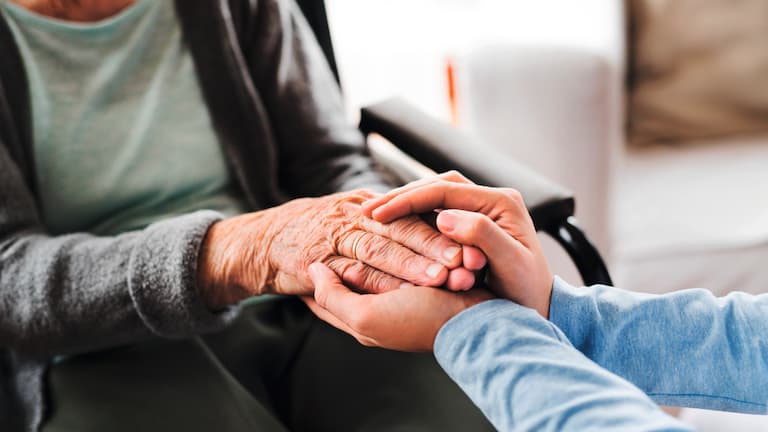
What is Quality of Life?
It means having a purpose in life

To help elderly people remain independent and have a more enriching and healthier lifestyle, more attention is being raised around quality of life rather than longevity. The meaning of ‘quality of life’ has been the topic of debate in recent years but its broadest definition can refer to the overall well-being, comfort, and satisfaction experienced by an individual or a community in various aspects of life, including physical, mental, social, and environmental factors.
A good quality of life is what makes life worth living and gives us purpose to get out of bed each morning. Just like a cup of coffee, it gives us a spring in our step. However, as we start to get older, there are things that we unfortunately can no longer do on our own or without support, which can lead individuals to lose their sense of purpose. That’s why keeping quality of life a high priority for residents in care and nursing homes is essential, to keep residents motivated and fulfilled.
It means personalisation

Maintaining a good quality of life requires a different approach for everyone, as it considers individual’s overall health, physical ability, mental wellbeing, and dependency on others, as well as other determining factors. Therefore, care and nursing homes must create highly personalised plans when it comes to supporting resident’s quality of life, based on their specific needs. It’s important to remember that maintaining individual’s quality of life can differ vastly to others depending on their ability to perform tasks independently, and the level of care they require.
For example, for those who suffer with mobility issues, adjustments can be made within the care home to ensure residents do not strain or hurt themselves when undertaking everyday tasks such as getting out of bed, dressing themselves and taking showers. This can be achieved by implementing mobility handles and supports to beds and showers and introduce adaptive clothing. Ambient Assisted Living (AAL) can also be implemented in care homes to promote an independent environment. AAL involves the use of technology such as smart devices, wireless networks, software applications and medical sensors which greatly reduces the dependence on carers. For instance, smaller tasks such as controlling the lights in a resident’s room or turning the TV on and off can now be supported through AAL. This allows carers to focus on bigger priorities within the care home.
Actions like these can support residents maintain their independence, resulting in less demand required by carers. It can also increase their sense of purpose, boosting their quality of life.
However, maintaining a good quality of life is not just based on resident’s needs, but also dependent on their enjoyments too. For example, listening to music, cooking, socialising, reading, and puzzles are just a few examples of tasks that can bring immense joy to their everyday life and should not be overlooked. Just think about the small things in life that bring you happiness.
It means cherishing our loved ones
Care and nursing homes can seek to improve their resident’s quality of life through other means too. The role of family, friends and loved ones is highly important, as loneliness and social isolation is a major issue in older adults which can lead to depression as well as increased visits to the hospital, according to findings. For those who suffer with mobility issues, technology can play a great role in making communication more accessible. For example, residents can now connect with their loved ones remotely through video calls.
It means protecting residents

One area that underpins quality of life is infection control to keep residents as healthy as possible. Whether it’s hygienically cleaned laundry results for their treasured items of clothing, or thoroughly cleaned cutlery and crockery; residents deserve high quality results in all aspects of their lives. For example, freshwater dishwashers uphold the highest standards of hygiene, providing peace of mind for residents and staff alike. Solutions by Miele Professional have been specifically created for the Care sector, which reduce the risk of contagious diseases, promote overall health, and ensure a safe environment. This is confirmed by independent institutes which regularly subject our machines to scrutiny, so the best quality of life can be upheld and hygiene remains a priority.
It means looking towards the future
As we look towards the future, how will the landscape of care adapt to secure the highest quality standards for residents? Every day, we’re seeing greater steps being made in the advancement of technologies. Robotics, for example, are being developed to bring companionship to the elderly and to help them with everyday tasks such as getting out of bed. Other digital innovations have already started to become engrained in everyday life in care homes, such as sensor monitors and wearable technologies for emergencies. Pilot schemes which use Artificial Intelligence (AI) are also being deployed to prevent falls and hospital visits. This technology will also benefit care professionals too from improving workflows to providing assistance, freeing up their time for other tasks.
At Miele Professional, we recognise that quality of life is a broad and complex topic. With hygiene playing a crucial role in care homes post-pandemic, we support care homes to overcome challenges together with our 360PRO solutions; to deliver the highest standards of cleanliness. This allows carers to focus on what’s truly important, to deliver the best quality of care to its residents for a happy and healthy life.
- 1.The World Health Organisation - https://www.who.int/europe/health-topics/ageing/
- 2.The Health Foundation - https://www.health.org.uk/news-and-comment/news/older-people-living-alone-are-50-more-likely-to-visit-ae-than-those-who-live-with/
- 3.MIT Technology Review - https://www.technologyreview.com/2023/01/09/1065135/japan-automating-eldercare-robots/
- 4.The Telegraph - https://www.telegraph.co.uk/news/2023/11/14/ai-help-nhs-cut-winter-hospital-admissions/


